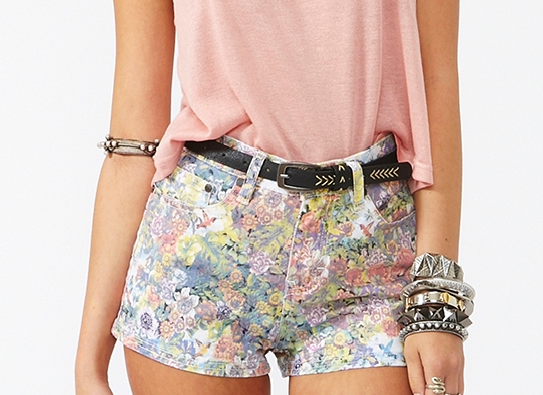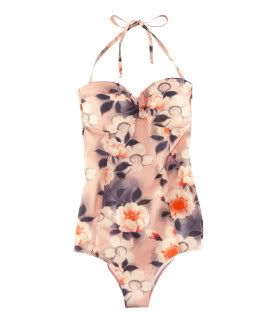Maybe not, but the trends we wear often reflect our culture's views of the environment. What are those views today for consumers in the United States? I'm not so sure. But it seems I can find only the most ideal parts of city and country in popular clothing chains, lately (like shoulder-padded blazers overgrown with vines). The city is often coded as "objective [and] male," reflected in tailoring and structure, while the country is "subjective, female...ideal," manifest in patterns and prints, according to critic, Lucy Lippard. City and country have been at odds for ages, since the dawn of industry and close knit communities, but these days, it's pretty clear that fashion has successfully blended the two; still, the grittiness of the great outdoors evades us:
|
|
These days, we wear cute, small-scale animals on our bodies instead of rugged animal skins. I can't remember the last time I saw someone wearing a wolf shirt, a head scarf, or mud-colored fatigues.
(Side note: I was all over fatigues when Destiny's Child's 'Soldier' came out):
Even the paisleys prints of the '70s seemed a bit more down-to-earth and realistic than the clothes currently in style. Nowadays, we've nothing but carnations, roses, and other petaled confections all over our shirts. Oh yes, and galaxy prints.
 |
| via |
In a way, I think fashion is so escapist lately because we want to numb ourselves to the harsh realities of soaring student loan debt, unemployment, and general disillusionment. And while we certainly look as great as ever (like modern Monet portraits, even) I'd venture to say that we'd do better to keep in touch with grittiness every once in awhile.


